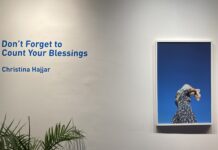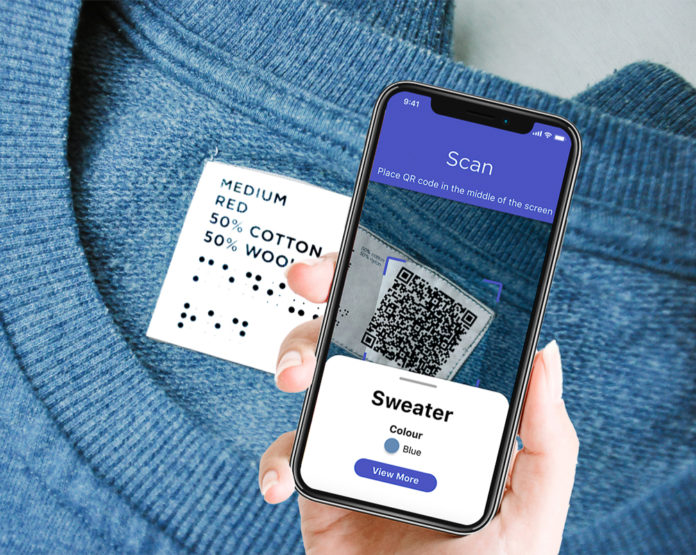
The clothing people choose to wear can be an important part of their identity, according to Chiara Del Gaudio, an assistant professor and program coordinator at the School of Industrial Design.
From texture to colour to style, this series of decisions made while getting dressed is one that many of us go through daily, without considering how privileged able-bodied people are to do so.
Mandy Hui and Liana Meere, recent graduates from Carleton University’s Industrial Design program, have not only recognized the difficulties that visually impaired people face when choosing their clothing, but they’ve also come up with a concept to help them.
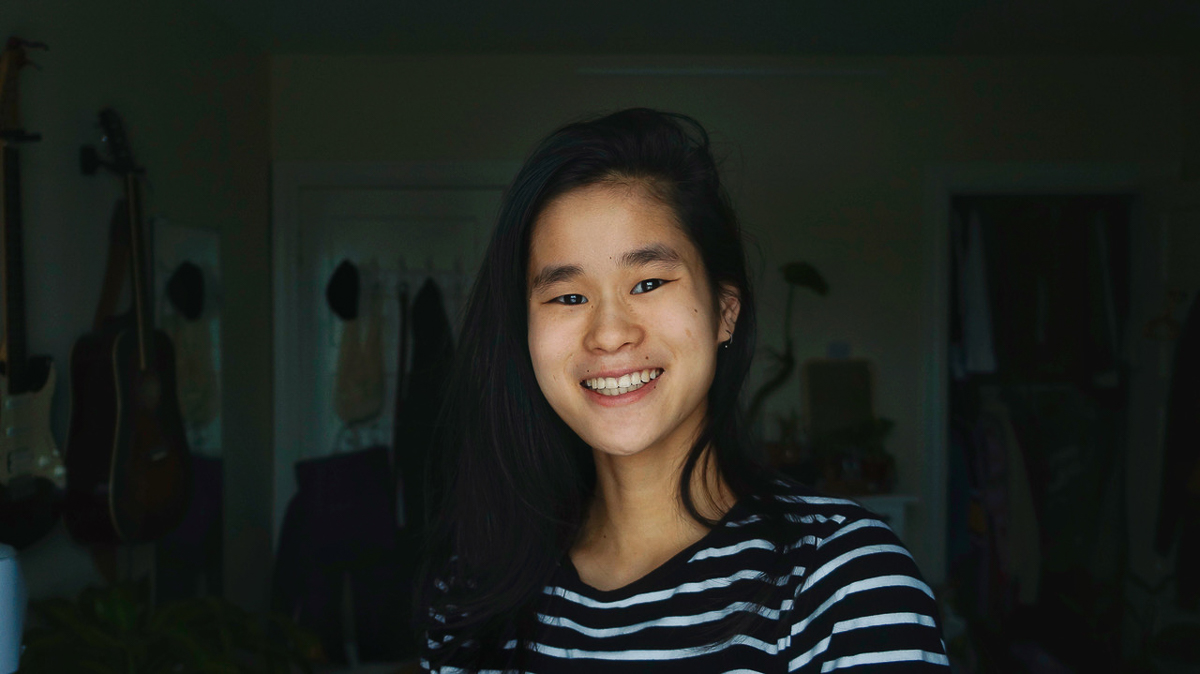
Innovation through competition
In April, Hui and Meere won first place in the Universities Canada Innovative Designs for Accessibility (IDeA) competition with the idea for their innovative app, Closet.
The IDeA competition challenges students from across Canada to think creatively and design innovative, practical, cost-effective solutions for people with disabilities who experience accessibility barriers in their everyday life, according to its website.
There are four categories in the competition. Hui and Meere competed in the attitudinal/systemic barriers category.
Their winning concept was an app that aims to help people with visual disabilities independently manage their wardrobe. After hearing about the competition from their professor, Hui and Meere created the app in their third-year studio class, a mandatory course for all industrial design students.
“We realized how heavily we rely on visual cues and our sight to navigate everyday tasks,” Meere said. “[Getting dressed] is something that you don’t realize could be a huge barrier to independence for people with visual impairments.”
A two-part concept
The award-winning proposal for the concept of Closet details how the app aids people with visual disabilities by matching clothes, determining the color of textiles, reading QR codes on wash labels and helping users read Braille on garment labels.
Hui explained that the idea is a two-part concept, starting with a clothing tag that gets attached during manufacturing.
“It still has texts about the information on sizing and colour, but in addition to that, there’s embroidered Braille so that it can provide the same information to people who use Braille,” Hui said. “So [people with visual impairments] can quickly check when they’re shopping or sifting through their closet, what colour the T-shirt is.”
The second part of the concept is an app that scans a QR code, also on the clothing tag, to pull up detailed information such as sizing or wash instructions, according to Hui.
“That way, all that information is accessible through someone’s device and can be read out through technology. They don’t need to depend on someone who’s sighted to help them find that information,” Hui said.
To create Closet, Hui and Meere worked closely with the Canadian Council of the Blind (CCB) and its visually impaired community to troubleshoot and receive feedback on the app.
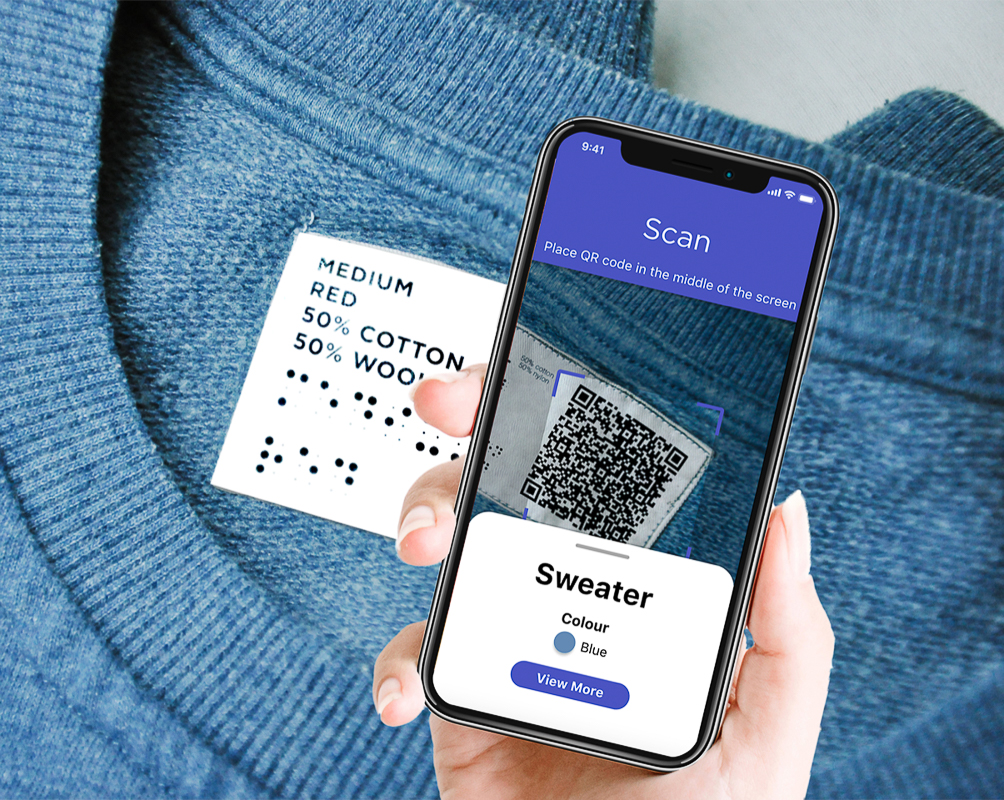
“We spoke with a group of people from the CCB,” Meere said. “They were really enthusiastic about it and they gave us a lot of insight into what was useful for them instead of us assuming what we thought would be useful.”
Normalizing daily life with a disability
Professor Del Gaudio is the one who first suggested the competition to Hui and Meere. She said Hui and Meere’s idea started off as something to help the visually impaired do laundry, but through a series of meetings and discussions, it evolved.
Del Gaudio said that although clothes and the way we dress may seem superficial, for many it’s a crucial mode of expression. She said giving people the ability to express themselves through mixing and matching textiles is important and should not be forgotten about in terms of disability.
“If it’s important for people that have no disability, why shouldn’t it be for people that have [one]? I think that we usually forget this. We think that everybody has the same way of interacting with objects,” Del Gaudio said. “And we don’t. So I think it’s about time that we try to design a different way.”
Larry Kostiuk, dean of Carleton’s School of Engineering and Design, is elated to have Carleton University represented once again at IDeA. From 2012 to 2016, Carleton won at least one of the first place prizes every year.
“Their achievement adds to Carleton’s long-running success at Universities Canada’s IDeA student competition and reflects our school of industrial design’s strong emphasis on inclusive and accessible design practices, as well as Carleton’s commitment to accessibility within the university’s Strategic Integrated Plan,” Kostiuk wrote in an email to the Charlatan.
Kostiuk said the Carleton community is very proud of Hui and Meere’s dedication to helping improve accessibility standards and that this kind of thinking needs to happen more often in the design process.
“It’s important that we recognize a shared responsibility in furthering inclusive design at all levels and that we understand how centering design on real-world needs opens the door to a more accessible world for everyone,” Kostiuk said.
Although Closet is still only a concept, Hui and Meere said they’re in the process of figuring out where they’d like to take their idea next and have not disregarded the thought of providing their labeling system and app to the public one day.
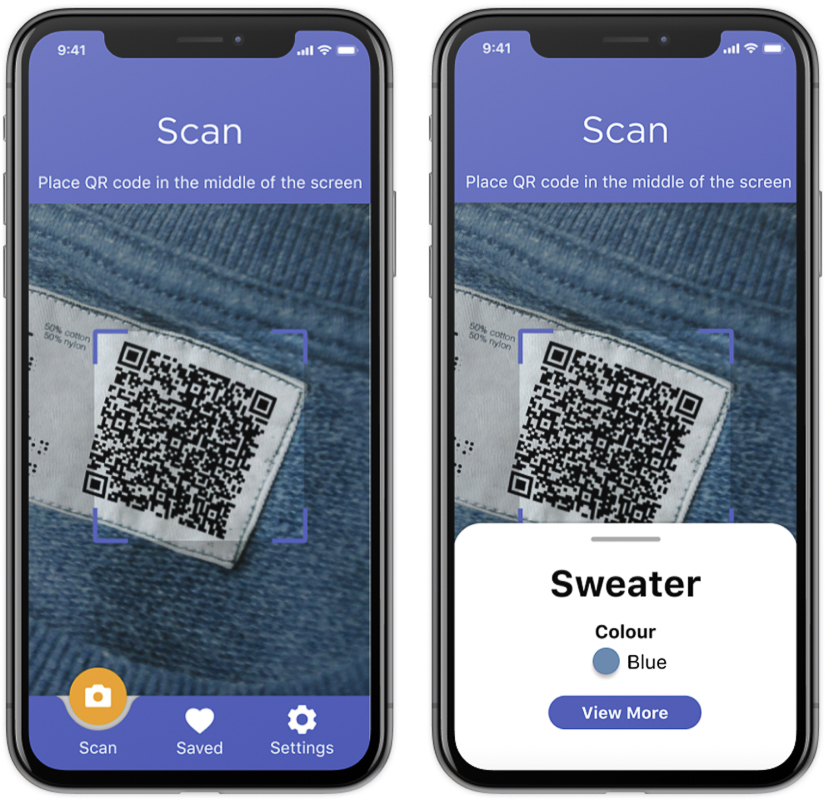
Featured image provided by Mandy Hui and Liana Meere.




